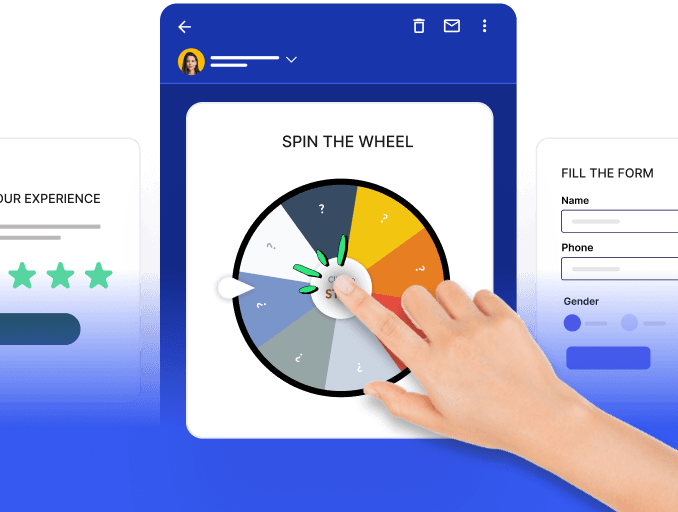Do you truly understand your customers? How are you segmenting them to tailor your marketing strategies effectively? It's not just about selling a product; it's about creating a personalized journey for each customer, from the moment they click on your site to the euphoria of post-purchase satisfaction. This is where a customer profile comes in handy.
In this guide, we will explore the fundamentals of customer profiles, their key components, and how businesses such as ecommerce stores can implement customer profiling to boost profitability.
Table of contents
What is a customer profile?
A customer profile is a collection of information about your customer, with the aim of identifying and understanding crucial customer segments. It brings together information like demographics, preferences, and behaviors to form a clear picture of who your customers are. This helps in tailoring experiences and interactions to meet the specific needs and interests of different groups.
Customer profiling is the process of constructing these profiles by analyzing the data that you have on them to identify and understand key customer segments.
In an ideal customer profile, you often find common attributes like:
- Age
- Geographic location
- Interests and hobbies
- Designation/job title
- Income
- Buying habits
- Pain points
Benefits of customer profiling
Customer profiling provides insights for shaping experiences that align with customer preferences, revealing their buying motivations and highlighting what they value most in brand interactions. Here are some ways customer profiling can help your business:
Enhances efficiency by eliminating data silos
A data silo occurs when different departments within a business keep the data on a customer isolated and don’t share it with the other departments. This separation makes it harder for businesses to see the full view of a customer's interactions and preferences, as each department only sees a part of the picture. However, customer profiling consolidates this data across departments and enables them to access valuable information for crafting effective marketing strategies.
Builds trust and loyalty through personalized experiences
Personalized experiences help a brand forge stronger connections with its customers, boosting customer loyalty programs and long-term engagement. This makes the customer feel more valued and fosters a sense of loyalty towards your brand. This loyalty not only strengthens the relationship between you and your customers but also increases the customer lifetime value (CLV).
Lowers customer acquisition costs
By really understanding who your customers are through profiling, you can smartly focus your marketing strategy and target customers who share the ideal buyer persona. This means that you spend less to attract new customers. It's all about getting the right message to the right people without wasting money on guesswork.
Increases sales
Targeting a specific group of people who are more likely to purchase a product increases the chance of getting higher sales. This is where customer profiling comes in handy since it separates the irrelevant audience from the people who are looking forward to buying your product. It helps you target the right people with the right message at the right time.
Reduces customer churn rate
The customer churn rate indicates how quickly a company loses customers over time. Customer profiles enable you to customize products and services to fit the customer’s needs. By effectively meeting customer needs, your business can improve satisfaction and loyalty, ultimately decreasing the likelihood of customers leaving and lowering the churn rate.
Helps in product development
By understanding your customers using the customer profiles you create, you can identify their needs and pain points and also predict future demand trends more accurately, which helps in avoiding unnecessary expenses on features that might not appeal to the target market. This approach allows for more efficient allocation of resources and ultimately lowers the overall cost of product development.
Types of data needed for customer profiling
Many businesses use customer data platforms to build customer profiles. Here are four types of data you can use to make these profiles work well in different situations.
Demographic data
Demographic data allows you to understand who exactly your customers are. This involves analyzing various characteristics such as:
- Ethnicity
- Job title
- Age
- Gender
- Marital status
- Income
- Education
By examining these factors, you can gain insights into the diverse backgrounds of their customer base, allowing you to create more effective marketing strategies and product offerings to meet the needs of different audience segments.
Psychographic data
Psychographic data answers the question, "What motivates a customer to make a purchase?" This type of profiling is divided by various factors such as:
- Personality traits
- Attitudes
- Mindsets
- Values and principles
- Lifestyle preferences
- Religious beliefs
- Political inclinations
Understanding the motive behind a purchase allows ecommerce stores to work in favor of such motives and personalize the product accurately. Although having this type of information about a customer gives a great advantage, it is also very hard to get a hold of such information accurately.
Behavioral data
Consumer behavior varies widely and is influenced by factors like:
- Buying patterns
- Spending tendencies
- Brand engagement patterns
- Product usage patterns
- Feedback styles
Understanding these behaviors allows you to make strategies and improve customer experiences, ultimately driving success in the competitive marketplace.
Geographic data
Various factors influence the purchasing decisions of consumers in different regions, like:
- Climatic conditions
- Cultural diversity
- Language
- Location
For instance, certain products may be sought after primarily in regions with extreme weather conditions. Therefore, it is important to segment customers based on geographical factors to cater to their unique needs and preferences.
B2B vs B2C customer profiles
The difference between B2B and B2C customer profiles lies primarily in the type of customer and their purchasing behavior.
When we talk about B2B customer profiling, we consider a business to be our potential customer. This navigates the approach and changes the parameters required for customer profiling into factors like the company's location, size, industry, revenue, and target audience.
However, when it comes to B2C customer profiling, we consider an individual to be our customer. Hence, we look into their age, lifestyle, demographics, and other factors that dictate their purchases.
How to create a customer profile
Now that we understand the basics of customer profiling, let us look into how you can create one for your business.
Step 1: Understand your product and its impact
Begin by thoroughly understanding your product's value proposition and its impact on customers. Investigate who your customers would be, how they would utilize your product, and why they would find it valuable. This foundational step is crucial for identifying your product's unique selling points and understanding the pain points it addresses for your customers.
Monitoring competitor activities closely will also help you understand their strategies and market segmentation. This enables you to differentiate your product and tailor your offerings to meet customer needs effectively.
Step 2: Choose a customer profile template
Select a customer profile template that suits your business needs and objectives. This template will serve as a structured framework for organizing customer profile data effectively.
Step 3: Collect data
This is where you gather basic information about your current customers to create their customer profiles. The various types of data that you can collect are discussed above. You can use different strategies to do this, including using email popups on your website, running email and sales campaigns, and so on. You can also review your customer journey map to gain insights into your customers' experiences and pain points.
Step 4: Analyze the collected data
Sort through the information you've gathered from various sources to uncover valuable insights about your customer's preferences and behaviors, allowing you to make informed decisions for your business.
Step 5: Create customer profiles
Organize the gathered data into detailed customer profiles, highlighting the key characteristics and preferences of your target audience. You can find some examples of useful customer profiles at the end of this guide.
Step 6: Implement customer profile
Actively utilize the customer profiles in your day-to-day operations, ensuring that all departments within your organization are aligned with customer needs and preferences. Continuously update and refine the profiles based on new data and insights to keep them relevant and impactful. You can read more about how you can use customer profiles below.
Step 7: Gather feedback and improve
Gather customer feedback and identify what customers need improvements in. Keep updating your understanding of customer preferences and market trends to stay competitive in the marketplace.
How to use customer profiles
Here are some ideas and strategies where you can use the customer profiles you’ve created to provide better customer experiences, and customer service and increase sales:
Provide personalized and effective customer support by addressing concerns more efficiently based on their specific pain points and past interactions.
Segment your email lists based on important data points to send targeted and relevant content for increasing engagement and conversion rates.
Design loyalty programs to reward loyal customers and encourage repeat purchases to promote long-term relationships and brand advocacy.
Determine pricing strategies that resonate with different segments of your audience.
Leverage customer profiles to craft social media content and interactions to increase engagement and build stronger connections with your audience.
Identify new market opportunities by leveraging the data on what kind of audience your products best appeal to and expand your customer base.
Examples of customer profiles
You have the freedom to shape customer profiles based on your business needs, goals, and the industry you’re in. Here are a few customer profile examples that collect different sets of data as required by the businesses:
Example 1: This customer profile provides information about what the customer does for work, where they're located, what products they use in their industry, their goals, and the problems they encounter in their field. This can help your business offer similar products to what they’ve already used or products that solve the common industry challenges and can help achieve their goals
Example 2: This customer profile talks about the customer's job, age, where they live, how much they make, what they've bought before, what they've looked at online, and how they like to hear from us. This customer profile will help you to understand the purchasing capacity of different types of customers, what services you can offer them, what other services they’re interested and how you can reach out to them.
Example 3: This profile has customer information about what the customer does for work, how old they are, their education, skills, any certifications they have, the kind of projects they've worked on, and any extra skills they bring to the table. This information can help you offer services relating to their additional ability or their occupation and also services related to the projects they’ve worked on.
Conclusion
Customer profiling is all about understanding who your customers are and what they want. These profiles are like cheat sheets for your marketing team, sales team, and those making your products. In order to take full advantage of these profiles, keep them fresh and up-to-date so you always know what your customers are into. When you nail this, your customers are happier, you sell more, and you build solid, long-term relationships.







